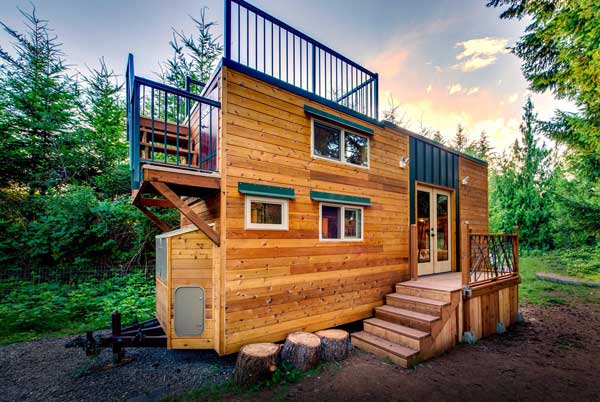Older generations have flaunted a lifestyle involving material objects and large properties with wide open backyards and big living areas, and while this is a perfectly fine way to live, the pressures of today do not seem to accommodate for it.
Sometimes for trends, but usually out of necessity, young people are sticking to the bare minimum of goods. Small spaces and little clutter appeal more to a technology focused world. House design has now also jumped onto this way of living, with their own innovation: the tiny home.
What is a tiny home?
Tiny homes are a brand new way of living. Generally speaking, it refers to a compact and movable house that is no bigger than 500 square metres. These houses feature the necessities for living; a small kitchen, perhaps a bathroom or outhouse, a mini lounge area and a bed. Think of it like a granny flat, a miniature version of a house made to only cater for the bare necessities and take up as a little space as possible. For a materialistic person, these way of minimal living may sound horrifying, but for many looking for a less object-focused lifestyle, it’s the way to go.
What’s so great about them?
Simply put: they are cheaper than a regular house. Tiny homes come at a time in the economy where property investment and ownership seems like a near impossible pursuit. Tiny homes aren’t hooked up to any land and can be moved easily, so they don’t come with the usual real estate costs, and usually end up being a fraction of the price of a house. This is a great investment alternative for low income earners, retirees, the homeless and millennials bearing the burden of unreasonable property prices. For many, it’ll stop them being forced to settle into a rent trap that could leave them with less money than if they were to purchase a home.
Another benefit, aside from affordability and space effectiveness, is the possibility for these houses to be completely self-sustainable. As these aren’t hooked up to utilities or set in the ground, it gives the freedom for the owners to use power from their own sources, saving them money and promoting an ‘off the grid’ lifestyle.
Why haven’t I heard of them?
Tiny homes still have a few hurdles they have to jump through before making it big in mainstream audiences. While a minimalist lifestyle is certainly trending more than ever before, there are many still disinterested in a living in such a small, isolated space, especially those used to living in a much larger home.
Furthermore, big cities, major towns and metropolitan areas are far less inclined to invest in and approve of these self-sustained homes. Many land owners won’t allow purchasing such small amounts of land, while many towns also require property owners to be connected with the local utilities. For the city dwellers, this way of life seems almost impossible. However, smaller towns are willing to approve of these homes, so more remote areas are a good option to consider.
These houses aren’t for everyone; a minimalistic lifestyle is something many might dread. But, with property ownership being a difficult game to play and the cost of living only increasing, it may be the smartest choice for many young people. Plus, they are pretty adorable.

![5 Reasons You Should Travel Alone Airplane [image source: chau nguyen/ http://thedevilhatessweatpants.blogspot.com.au ], crowd ink, crowdink, crowdink.com, crowdink.com.au](https://crowdink.com/wp-content/uploads/2016/08/Chau-airplane-218x150.jpg)




























![5 Reasons You Should Travel Alone Airplane [image source: chau nguyen/ http://thedevilhatessweatpants.blogspot.com.au ], crowd ink, crowdink, crowdink.com, crowdink.com.au](https://crowdink.com/wp-content/uploads/2016/08/Chau-airplane-100x70.jpg)


